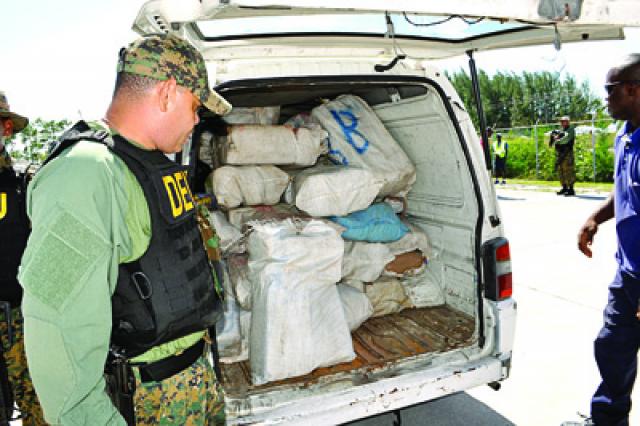Ahvia J Campbell
By
Ricardo Swire
Caribbean archipelago the Bahamas’ approximately 388,000 residents abhorred news of seven dead in the capital Nassau, during a single February 2017 weekend.
At that point Bahamas’ internal security data recorded a minimum twenty-seven murders for 2017. Only fifty miles away from America’s mainland the Bahamas’ 700 cays and islands are optimal drugs trafficking transit points. Strung southward from Florida’s coast to Cuba, the Bahamas straddles the Western Hemisphere’s most important maritime shipping lanes.
Regional intelligence reports paint a Bahamian picture of drugs related community gang activity and aggressive conflicts. Previous statistics indicated in a two year span local counter-narcotics efforts seized transiting drugs valued at almost US$800 million. Just a fraction of cocaine, marijuana and Methaqualone pills familiarly known as “Quaaludes” on local community streets. Transnational Drug Trafficking Organizations (DTOs) frequently move product northward from Bolivia, Colombia, Ecuador and Peru.
On the global stage innumerable opportunities for transnational DTOs to smuggle and hide contraband along the Bahamas’ extensive coastline, have proven advantageous and financially lucrative. Bahamian underworld characters earn as much as US$10,000 each for providing a few barrels of aviation fuel to drug planes landed on clandestine airstrips, equivalent to the yearly remuneration of a veteran RBPF officer on the force for ten years.
In one scenario a combined Royal Bahamas Police Force (RBPF)/US Drug Enforcement Administration (DEA) operation conducted on North West Cay, in the vicinity of Great Inagua, discovered 345 pounds of cocaine valued US$2.3 million. In another operation, spanning a two month period, RBPF Drug Squad detectives intercepted more than 50 pounds of cocaine at Lynden Pindling International Airport.
In early July the same year, acting on intelligence provided by US Customs & Border Protection (CBP), more than 40 pounds of cocaine was seized aboard a commercial airline while refueling on the tarmac. During mid-July a drug mule was detained attempting to transport more than seven pounds of cocaine. In August another drug mule, arrested on arrival at LPIA, carried four and a half pounds of cocaine.
On February 13, 2017 the Bahamian Prime Minister declared criminality was now akin to the “Wild West.” Two RBPF officers were shot days before. The Commissioner of Police (COP) declared to the media; “It’s a falsehood to tell the Bahamian public and world at large that the Bahamas is in crisis. That is nonsense!” Yet on February 15, 2017 the National Security Minister deployed the Bahamas Defence Force (BDF) to assist members of the RBPF with community crime countermeasures.
“Lock downs” and snap raids of intelligence identified “crime hot-spots” and formation of the Gun Interdiction Taskforce were other government initiatives. In the mini constellation’s outer Islands gunfire exchange between American DTOs and Bahamian pirates, attempting to steal transiting marijuana shipments en route to the US Mainland, are routine. Over the years documentation highlighted episodes of major drug traffickers allowed to operate in the Bahamas autonomously, under protection of influential Bahamian nationals with high-level government associates.



No Comments Yet!
You can be first to comment this post!